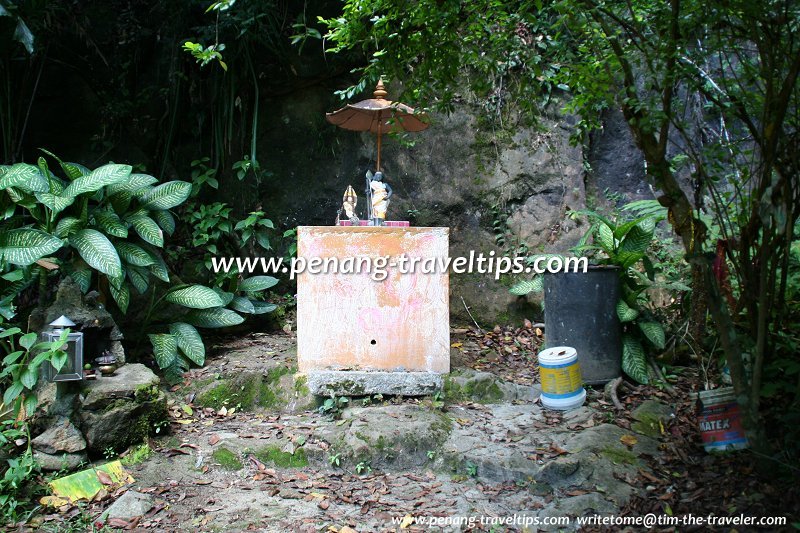
Original Balathandayuthapani Shrine (27 January, 2008)
© Timothy Tye using this photo
Writing this in July 2012, I have personally not yet come across the said statement by Francis Light, and would be very interested to review and verify it. If this is substantiated, it will provide evidence that Tamils have already established themselves on this part of Penang Island (in addition to possible Tamil settlements along Sungai Pinang).
The Original Balathandayuthapani Temple was the main temple for the worship of Murugan until 1850, when it had to be relocated when the British administration took over the area to establish a reservoir. The temple was given an eleven-acre plot of land along the then Waterfall Road. The relocated temple was completed in 1850. It is located at a perch overlooking George Town.
Although the worship of Murugan was relocated, the original shrine did not totally disappear. Visitors to the Penang Botanic Gardens Waterfall will be able to see the shrine. However, access to this area is restricted, and permission has to be sought from PBA Penang.

An altar at the Botanic Gardens Waterfall (27 January, 2008)
© Timothy Tye using this photo

Run-off from the Botanic Gardens Waterfall (27 January, 2008)
© Timothy Tye using this photo
source:http://www.penang-traveltips.com/original-balathandayuthapani-temple.htm

